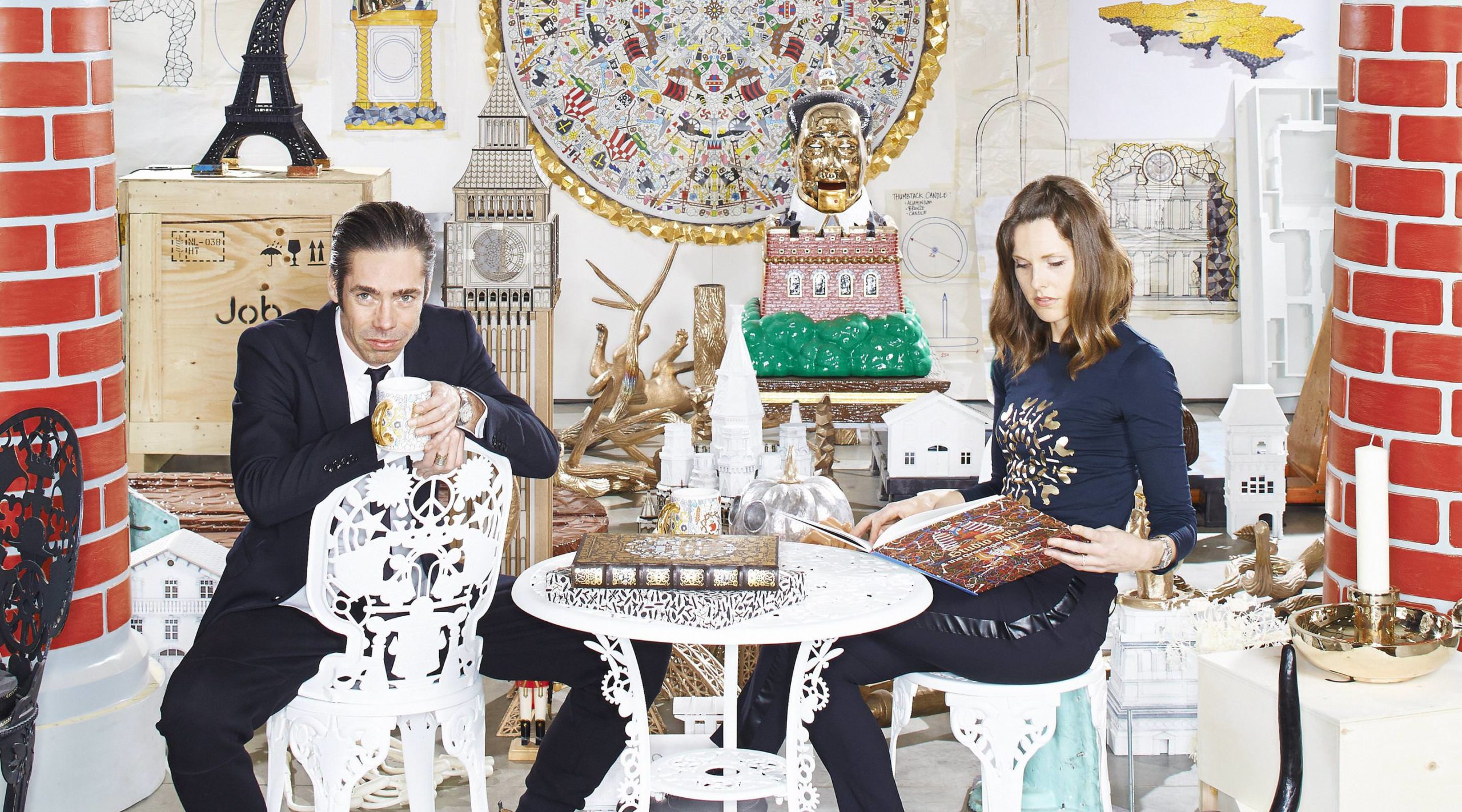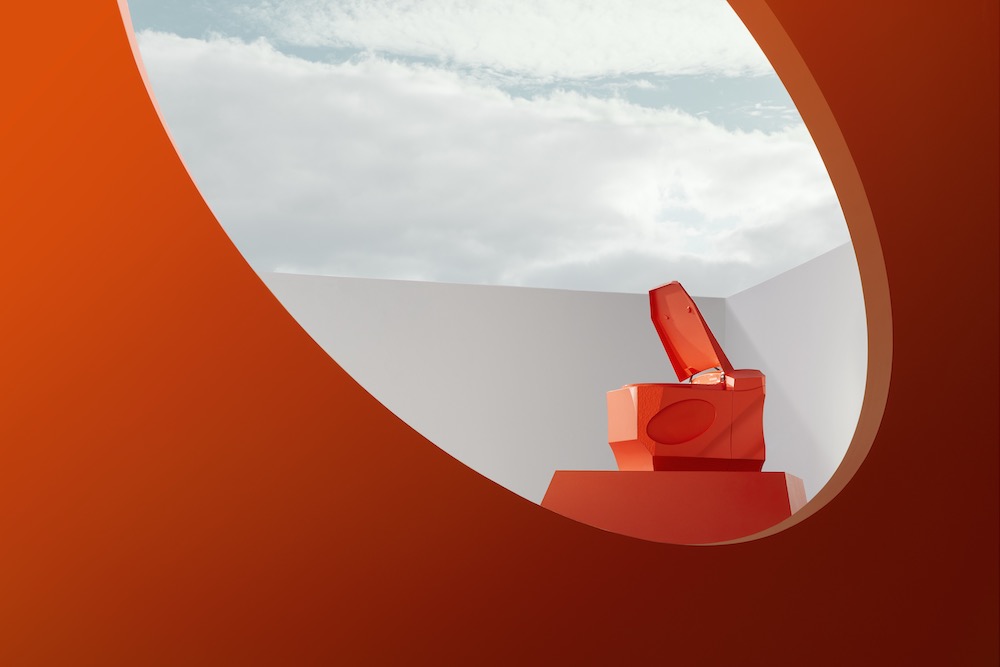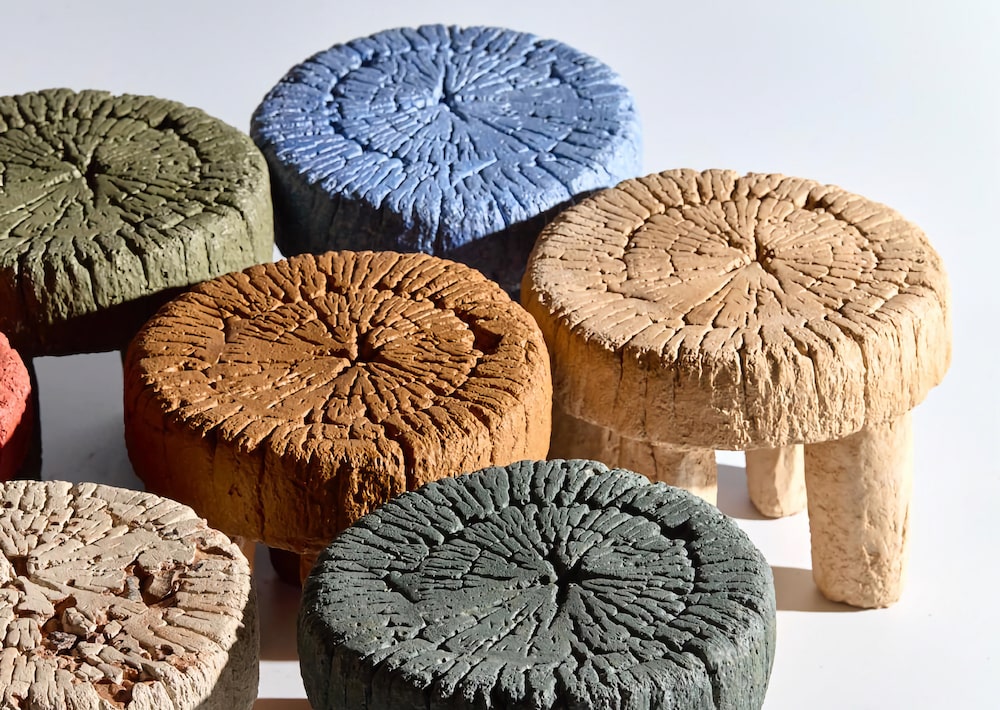Job Smeets and Nynke Tynagel of Studio Job have been infiltrating the design world with a unique library of iconography, pop cultural allusions, and much-needed dose of humor since 2000. The two met at the Dutch Design Academy in Eindhoven before founding their studio, setting out to create their own “world,” as they describe it, in direct contrast to the ruling modernists of the industry. Studio Job blended art, design, music, and fashion, long before it was accepted, creating their own planet of objects and projects that fit within a gallery just as easily as a furniture showroom.
The Studio Job planet is filled with Pop imagery ranging from farm animals to food, Big Ben to fossils, and trains to trees. Their collection of references is ever growing, with the latest edition inspired by the work they’ve been doing in the U.S.—in the form of fast food, fittingly. In Milan during Salone del Mobile, they debuted “BLOW” for Seletti, a series of furniture and other items shaped like hot dogs, hamburgers, and more.
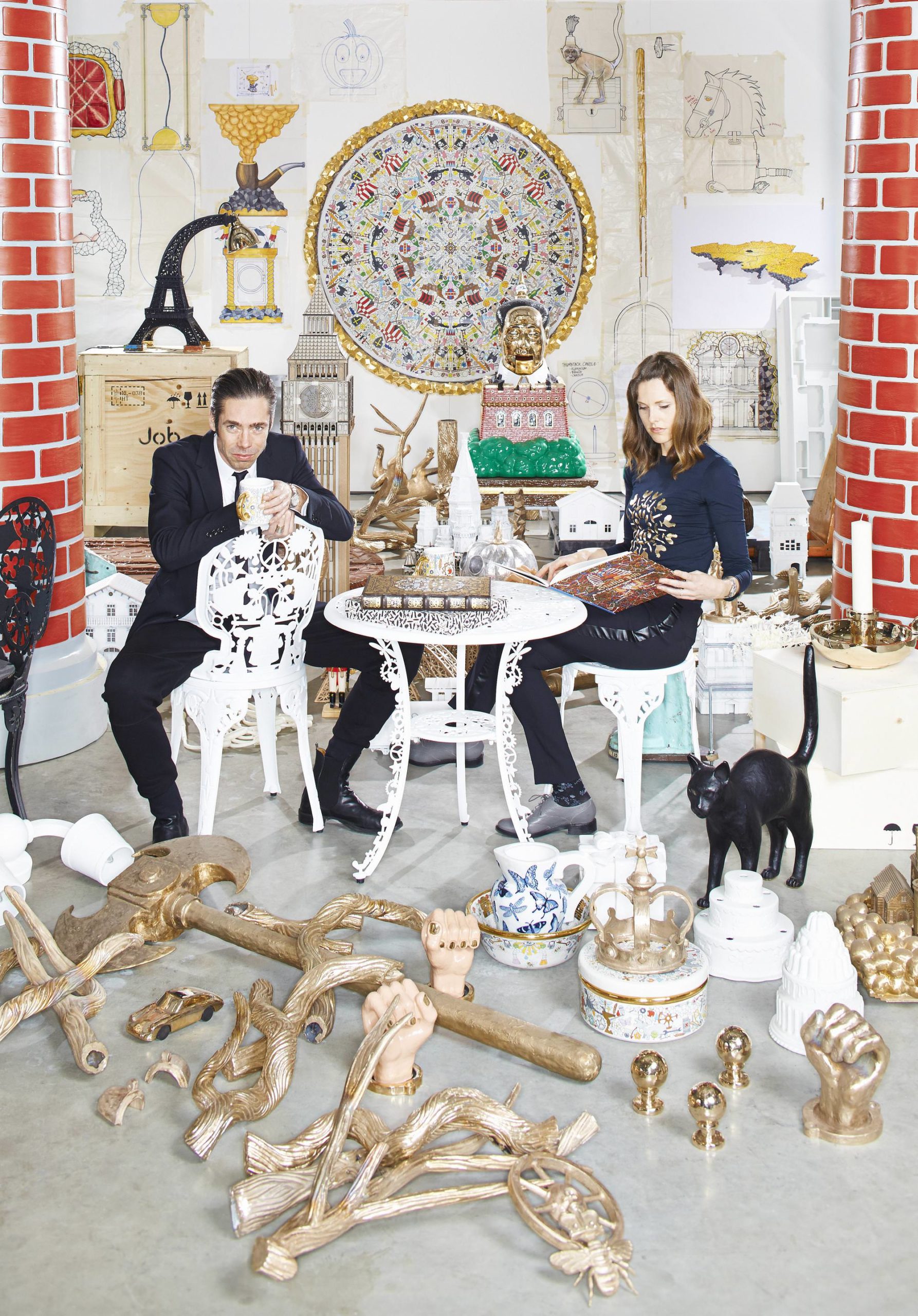
Portrait by h Rene van der Hulst
And while rainbows may be a recurring icon in their repertoire, Smeet and Tynagel don’t shy away from headier subjects, often wielding humor as a critical weapon of choice. This June, they showcased a Sinking Ship work at Design Miami/ Basel with Carpenters Workshop Gallery that is related to the current political climate in Europe, alluding to the demise of old Europe and its pretensions.
Whitewall spoke with Studio Job before the start of a busy summer full of projects in Europe and the U.S. for manufacturers like Alessi, Swatch, and Qeebo; with galleries like Chamber, Friedman Benda, and Samuel Vanhoegaerden; and commissions like Faena, Art Church, and PC Hooftstraat.
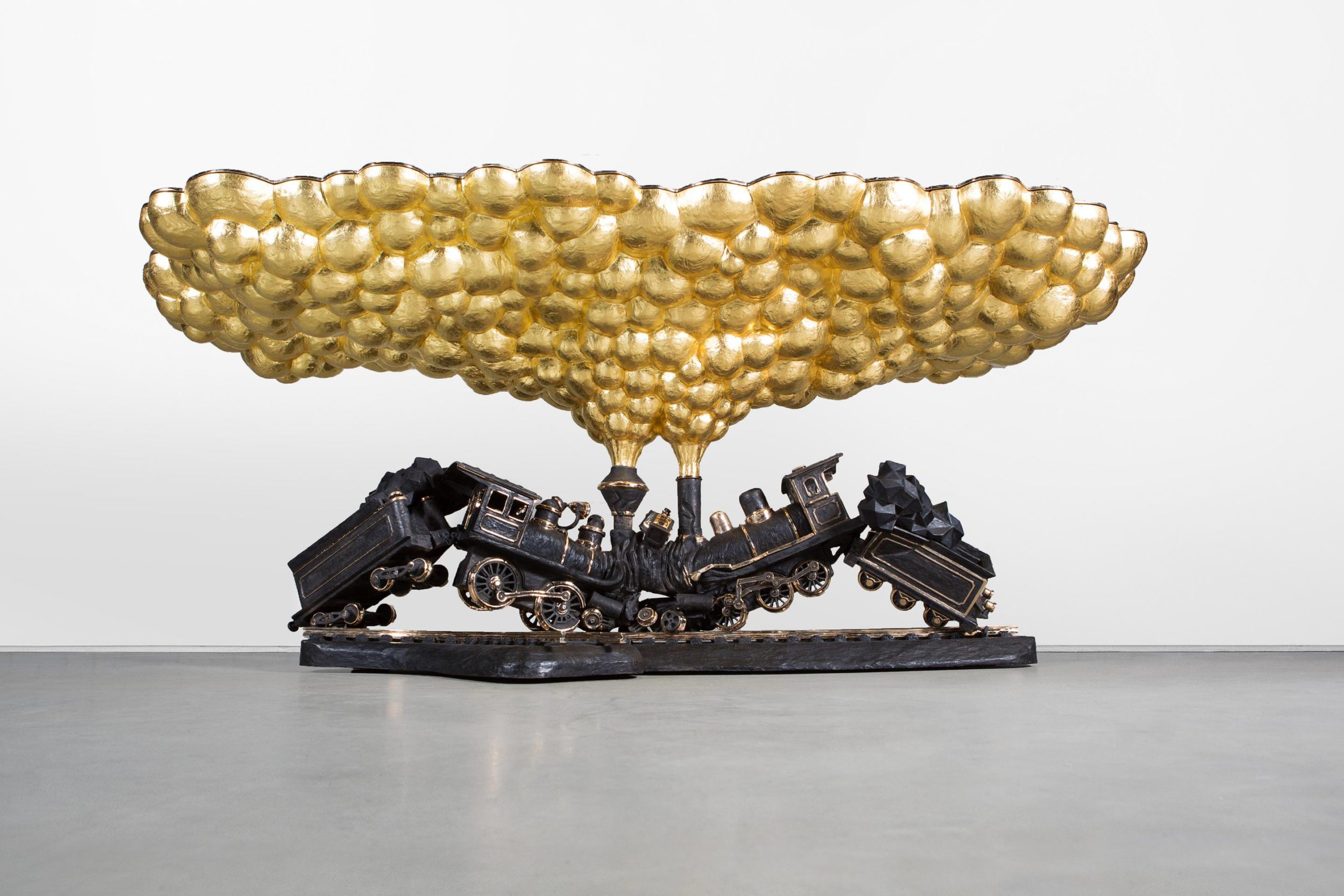
Studio Job, Train Crash, 2015.
WHITEWALL: In Milan this year, you debuted a collection for Seletti, “BLOW,” made up of fast-food furniture and objects. How did you arrive at fast food as a source of inspiration for BLOW?
STUDIO JOB: The inspiration for the fast-food furniture was borne out of a reaction to a combination of current affairs in the U.S. and our feelings toward the superficiality of Milan Salone presentations; all those living room setups that are launched in Milan every year showcasing “good taste” in its most reductive and bland form, from these big brands. Year after year, these brands parade their latest fabric or addition to their collection. We reacted to this empty setup and how it all becomes like fast food.
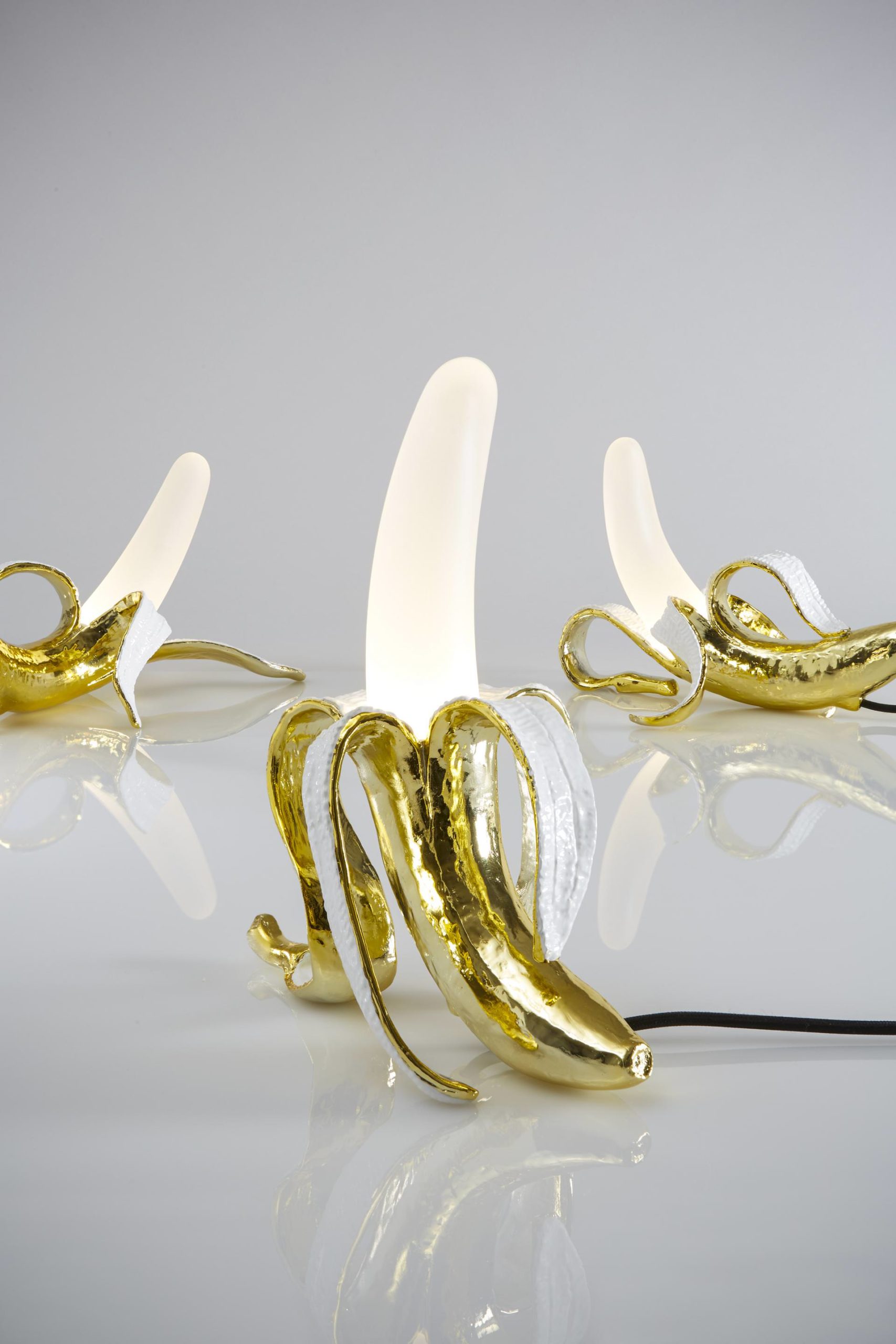
Studio Job, limited edition Banana lamps for Seletti
The humorless spewing out of all those new pieces of furniture every year that all look the same and say nothing about design and couture and all have no meaning—it becomes a sort of fast-food snack devoured for one week by the press and designers, then thrown away. Brands take their long-thought-out launches so seriously. We crafted our “BLOW” collection using the same production methods, the same high-end fabrics and factories. We really wanted to play on this idea that a sofa is “better” because is it made in a certain factory in “good taste,” when really it’s disposable design, quickly consumed and indeterminately unsatisfying, much like fast food.
WW: During last year’s London Design Festival, you created your first parquet flooring with Bisazza. Why did you want to incorporate fossils into the wood materials?
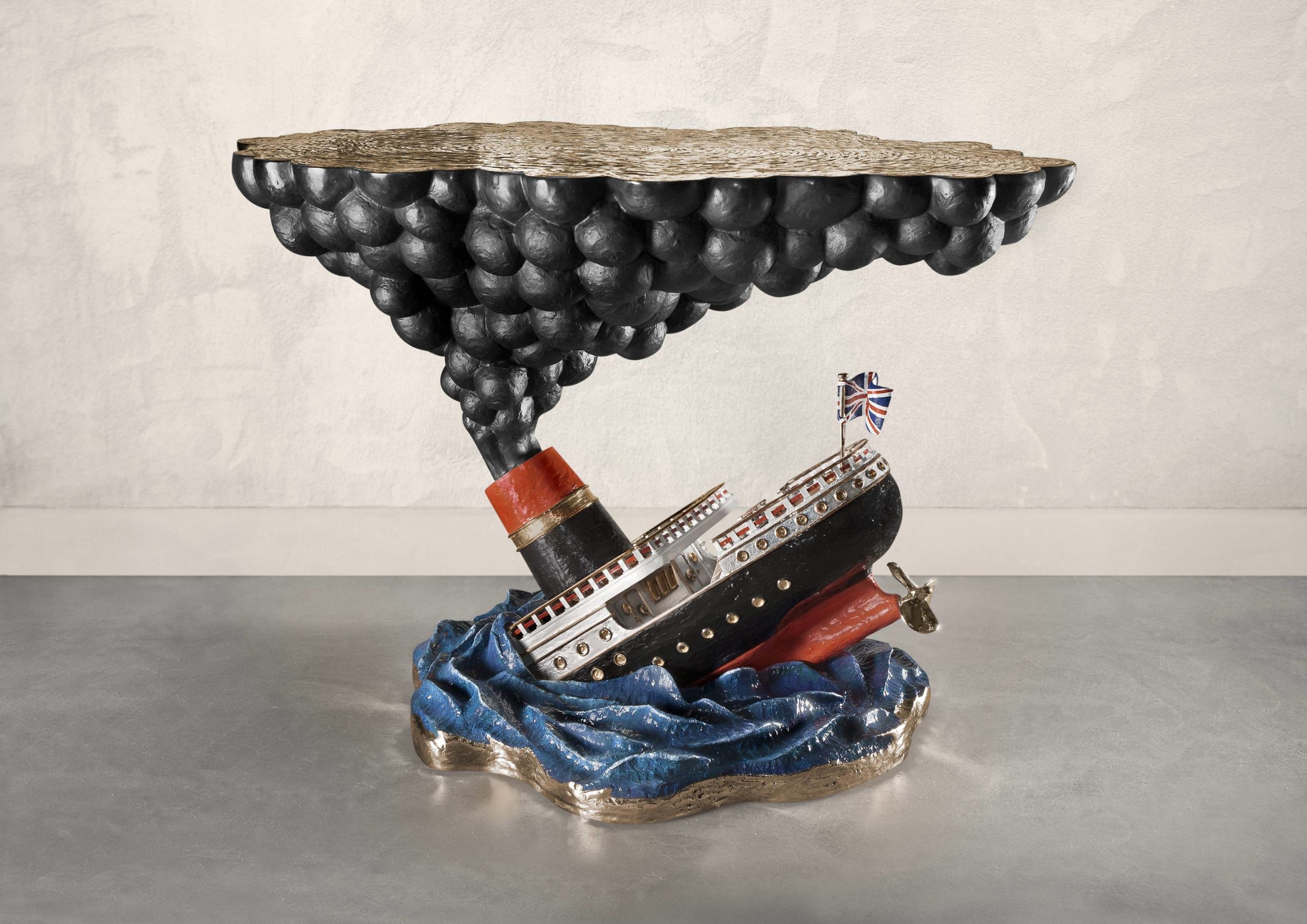
Studio Job, Sinking Ship, 2016.
SJ: Fossils are part and parcel of our work. For the flooring collection, they wanted us to use elements from our existing body of work, so we used the fossils engraved in the parquet as the source material for this collaboration. We create a Studio Job world. Some pieces just refer to decoration very similar to the early-20th-century Arts and Crafts movement. Not every design was explainable, but it began to create a style. This is what we have with our body of work.
WW: We saw on your Instagram account recently a preview of a Sinking Ship piece for Design Miami/ Basel in June. Can you tell us about that piece? Is it related at all to your Train Crash table?
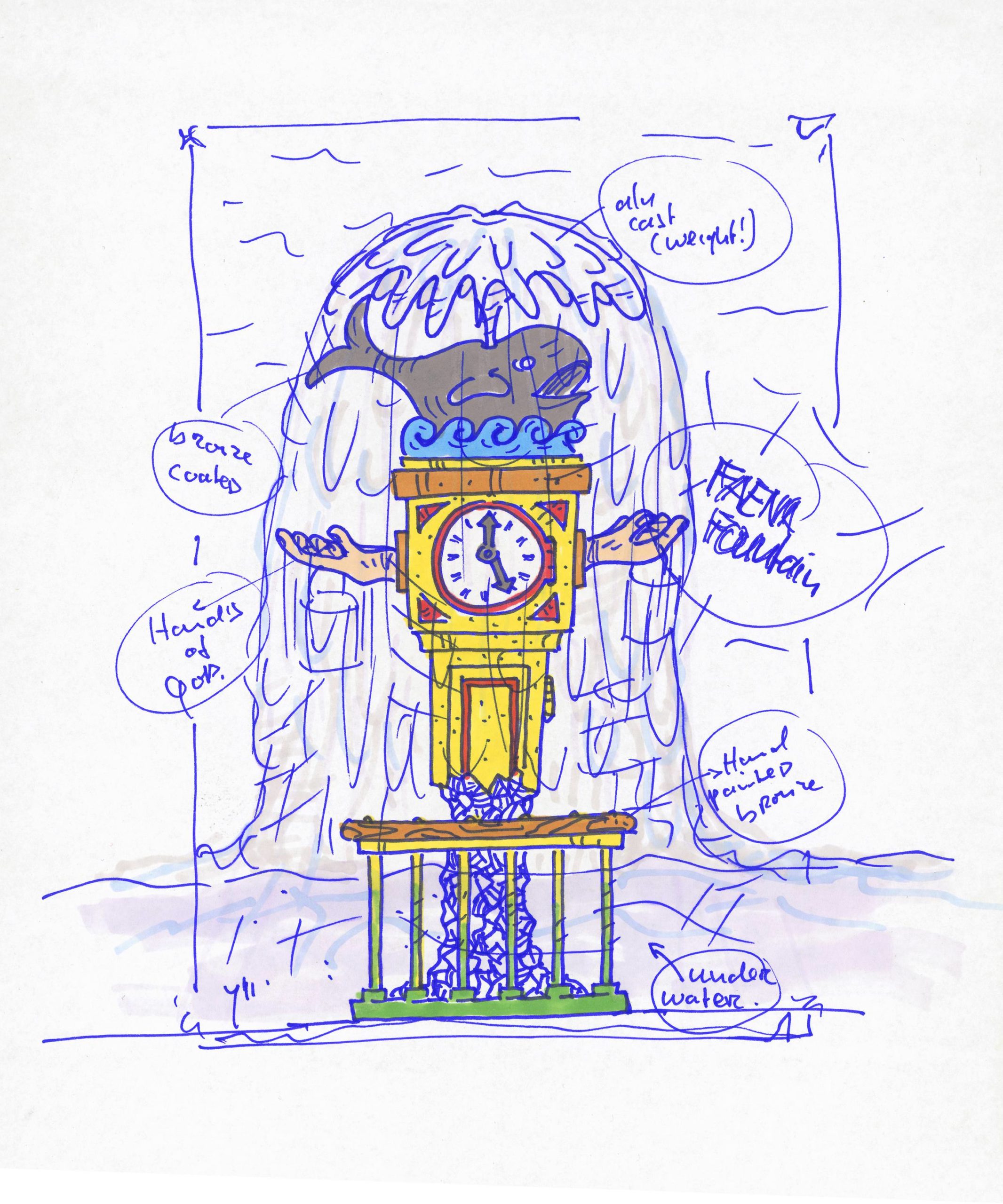
Drawing of Studio Job’s fountain for Faena.
SJ: This is not related at all to the Train Crash table, which was a personal piece about the end of our relationship. The sinking ship is related to what is happening in Europe right now. It represents the fall of old Europe, reflecting the recent political sentiments in this time we are living in, with all the threats and instability, the pretentiousness and manipulation of the politics. Back at the turn of the last century, the Titanic was representative of a modern society that believed it was invincible and could never fail; they built this ship that represented all the luxury of the modern life, but on its maiden voyage, it sank.
This piece reflects the pretentiousness and how we are living in a self-declared grand developed society of modern life, but in the end the ship will inevitably sink like the Titanic. Historically, nothing really changes, and we walk the same track every time and make the same mistakes. As a society, we believe we are invincible.
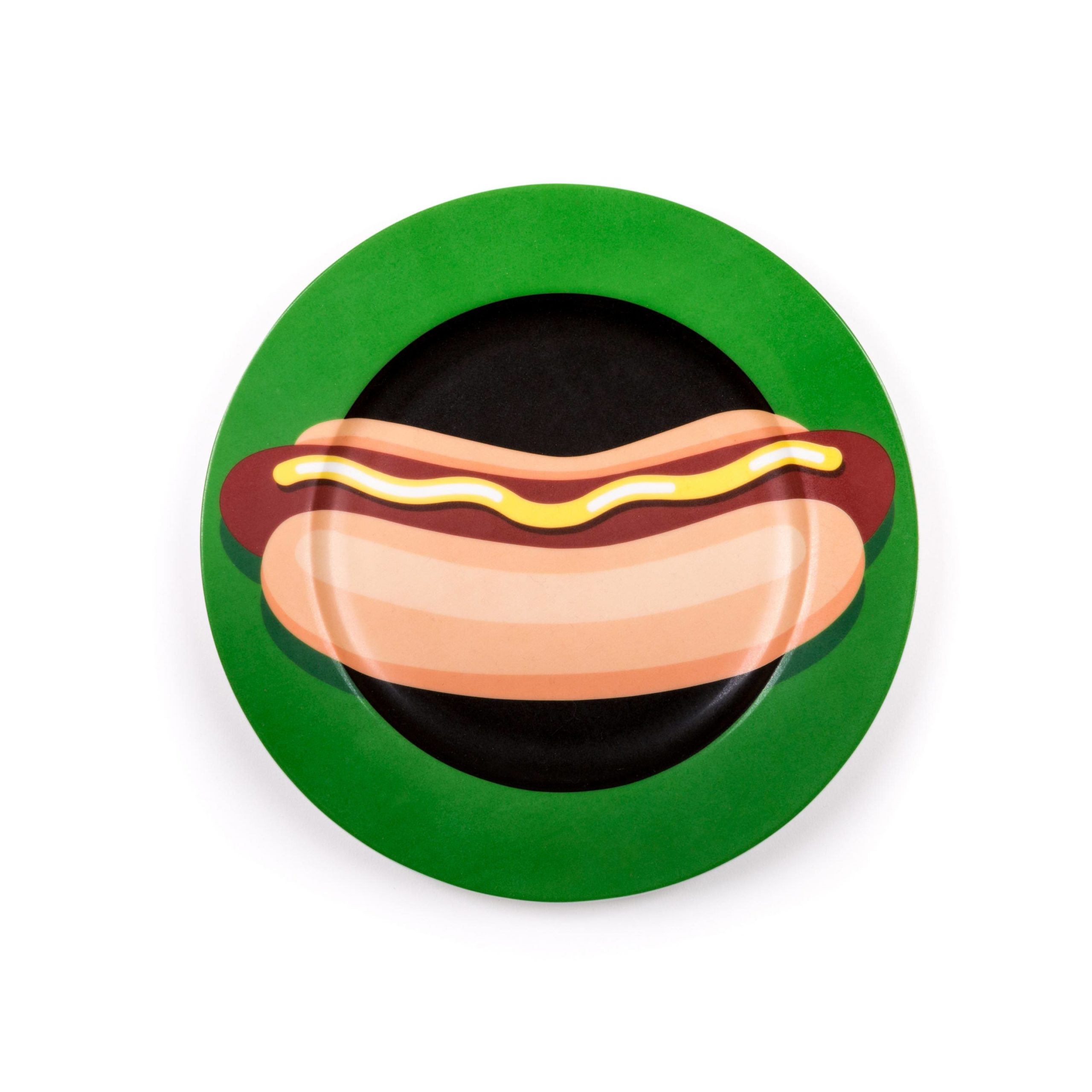
Studio Job “Blow” for Seletti
WW: As you mentioned, the Train Crash table was autobiographical in that it represented the end of your romantic relationship. How much of your work is imbued with personal story?
SJ: Our work would mean nothing if there isn’t something of ourselves in it. With every piece or design there is a bit of us within it, be it our pain or our humor. Without that, we would become just a factory making bland aesthetic designs like many studios today. What we are is a studio creating pieces with real substance behind each piece or project—this is what sets us apart from most other studios who use trend forecasting to look at color and shape. We reject this entire approach. We create art that becomes design rather than design that is post-rationalized with an art theme.
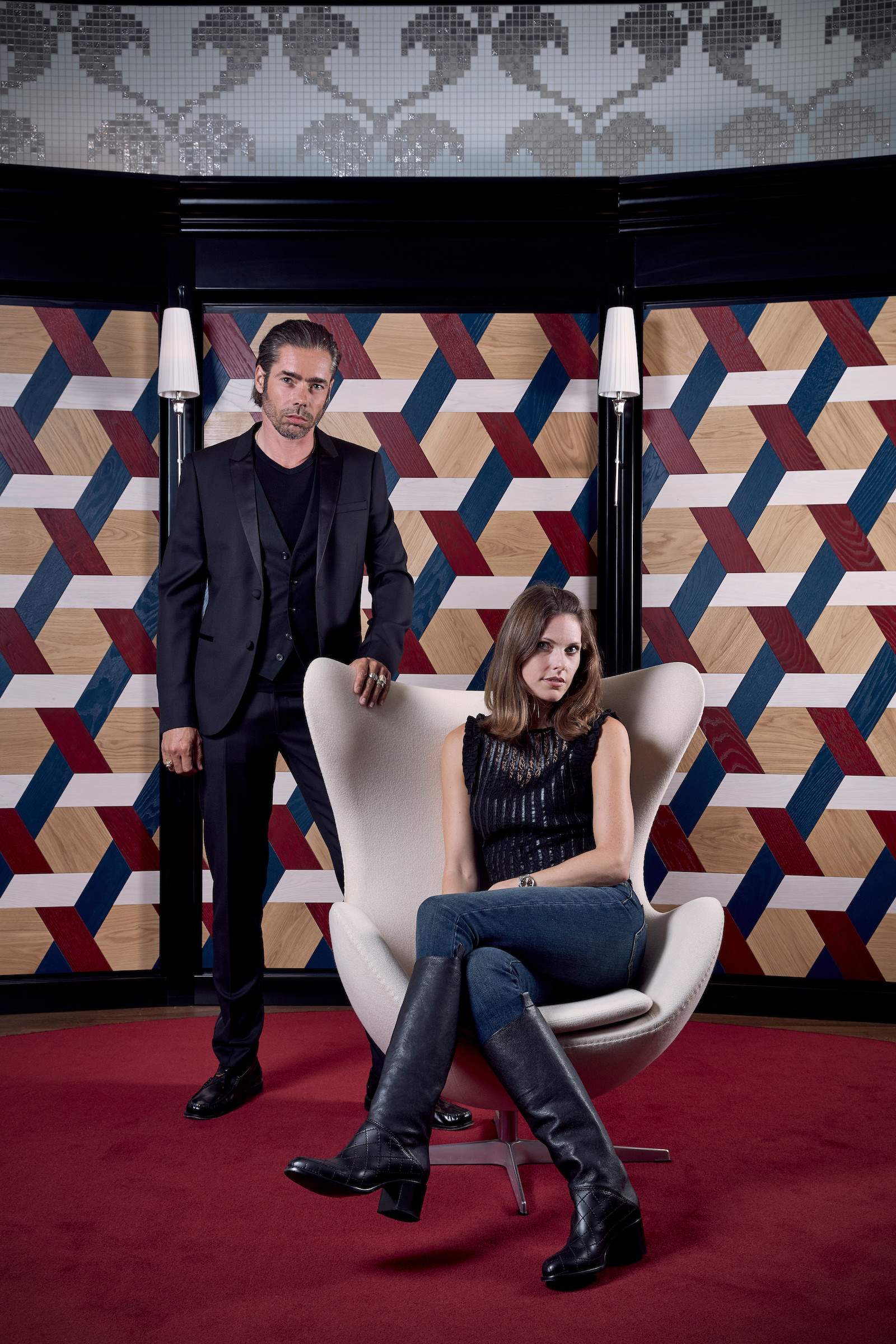
Photo by Mark Cocksedge
WW: Going back a bit earlier, what were both of your early interactions with design? Is it something you grew up around, or arrived at later?
JOB SMEETS: I never grew up among contemporary design. I grew up among antiques and restorations. The origin of my understanding of art and design sits between the traditional and the contemporary. My parents were antique dealers for a while, which exposed me to a vast history of functional and decorative design and craft. I was never interested in design at the academy, and I’m still not interested in design.
I ended up at the Design Academy almost by accident. At the time I was in the army, where you were allowed a day off to visit a school, so I went with along with a friend to the design academy open day and I just applied and got accepted.
NYNKE TYNAGEL: I grew up surrounded by modernist design and architecture in a village that was a safe haven for modernist design and contemporary art. My father was an art director at a local weaving mill in the Rietveld building and my mother was a textile designer.
SJ: In some ways, it is in our blood to be creating and solving problems, but there’s an element of our psyche that looks at the world from a different view than everyone else. That’s that people look to artists for a vision from a point of view that they can’t get to, an idea or an angle that is beyond their scope. We try to pull this into their vision through our work, take them to another place they haven’t seen before.
WW: When you founded Studio Job, you’ve said you had to sort of create a scene, as in the beginning your work was not accepted by modernists. Seventeen years later, it seems like the scene you created —mixing art, design, food, music, et cetera—has been embraced by the design world. When you started, did you imagine that change in the design industry?
SJ: We knew that we had to change something in the industry, and it was a huge niche that nobody used. It was obvious that would be a market, but we never realized we would be the founders of that market and movement. Nowadays, everyone is doing it, but we were to be the pioneers of this movement.
WW: You were really behind this concept of unusable design, using a piece of furniture as a canvas, rather than, say, a place to sit. What did you find appealing in that concept?
SJ: We always try to be the least a designer as possible and as much of an artist as possible. If this would be a real canvas, it becomes very precious and considered; its purpose and outcome will always be a piece art for the wall. When you disrupt this idea of art for art’s sake and use a piece of furniture as a canvas, in the end it’s a piece of furniture, so it’s less precious. It’s just a clock or a bench or a pair of shoes. The idea if it is art becomes a subjective conversation. A painter’s canvas is a very prestigious thing. If you use a piece of furniture, it’s still usable as a piece of furniture. If a canvas is a shit canvas, then you can’t use it for anything anymore. It’s less prestigious; there is less pressure on the final outcome.
WW: How would you describe your dynamic, and has that evolved over the years? Job, you’ve described Nynke as the designer, yourself as the art director. Is that still the case?
JS: We are constantly evolving as a team. The projects we work on now are different from five years ago, and the five before that, so we evolve our roles. Nynke is the graphic designer and I’m more the artist.
WW: Nynke, you’ve said, “Design used to only be about bringing the good news and finding solutions, but we think you can only show beauty if you also show the ugliness, that’s life.” How did you arrive at that idea, and why did you want to explore it through design?
NT: It’s not only pleasant things that can deliver good design, but confronting bad things can also deliver design so when you confront it, it becomes more authentic. Everyone wants to show the good side of life. We just do what we think is interesting. It’s the same thing as the object in design. Bad news is never used in design; it’s always the good news. Life is not always good news and happy stories, and we reflect these fractures in our design.
WW: You work differently from some designers, in that you don’t necessarily find inspiration in the tactility of materials—rather, a material helps to achieve the idea. Has there been a case where material was ever the starting point for a project?
SJ: In general, there has never a material that makes us inspired enough to start a project, but we can get inspired by revisiting old ways of producing. We found a contemporary visualization for stained glass windows. The last time anyone looked at this was in the 17th century, but we asked the question, “How does a contemporary stained glass window look?” The answer we found is that it looks abstract. The use of bronze was very much related to using a material that was an iconic material for art and interacting this material with design.
WW: Job, you’ve said, “Design can be so expressive, it doesn’t need to be called art.” That totally puts to rest this need some have to distinguish between art and design. Do you think people are finally waking up to the expressive possibilities of design?
JS: Yes, design is much more free than it used to be ten years ago, but it’s still a struggle between the modernists and the postmodernists, and we would like to fight for one term that is non-modernism. Go-go non-modernism!
WW: As your work has become more expressive, you’ve said that it’s also become more experimental. What have been some of your more recent experiments?
SJ: Well, there is one big experiment we have been working with: 3-D scanning bronze objects, creating them in plastic, and bringing them out for “BLOW.” It’s very experimental and has never happened before. We did this to close the book on art and design. It’s a real bridge between the art and the production pieces, so there’s no difference anymore except the materials. The interesting part of this is that the plastic piece is from the in the same place as the bronze ones so there is no real difference. It is quite experimental that there is a big risk that our collectors will not be happy with this. Maybe we are pissing on our own chips conceptually, but we think it’s an important experiment between high and low art.



